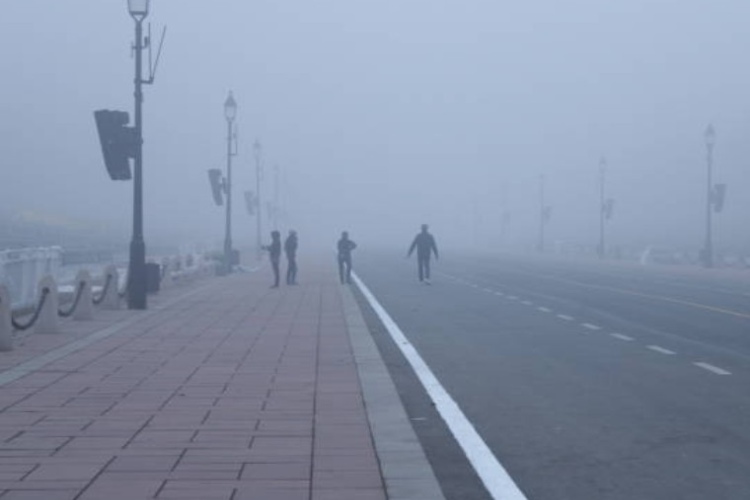Delhi smog crisis: Each Diwali, the national capital is engulfed in a thick blanket of smog — a crisis long foreseen but never solved. On 21 October 2025, New Delhi recorded a PM2.5 concentration of 442 and an AQI of 442 — among the highest in the world. The episode reveals a collision between India’s climate ambitions and its failure to control urban air pollution. Policymakers know the seasonal triggers — the burst of firecrackers, stubble burning, construction dust, and winter inversion — yet remain without an effective plan.
Across northern India, the sources of this toxic haze are familiar. Winter meteorology traps pollutants, vehicle and construction emissions persist, and post-harvest farm fires add smoke to the mix. This year, the government allowed so-called “green crackers” for three hours on Sunday and Monday after a court relaxation. As expected, citizens ignored the window and fireworks continued well into the night.
READ | Copper demand surge drives India’s sustainability push
This recurring pattern has direct implications for both public health and India’s climate credibility.
Delhi smog crisis and India’s climate ambition
India expects its carbon dioxide emissions to peak around 2040-45. Its 2030 Nationally Determined Contribution (NDC) commits to reducing emissions intensity of GDP by 45 per cent from 2005 levels and raising non-fossil power capacity to 50 per cent. These long-term targets are ambitious but create a policy mismatch: while climate planners think in decades, cities like Delhi face immediate air-quality collapse.
The disconnect between India’s decadal climate targets and its short-term pollution crisis is widening. Unless the two agendas converge, India risks losing credibility abroad while its citizens suffer at home.
Policy and governance failure in Delhi
Delhi’s descent into a seasonal smog chamber exposes deep governance flaws. An AQI exceeding 440 is no longer a warning — it is an emergency. The capital has ranked among the world’s most polluted cities for years, and in 2024 it was the worst. To meet national air-quality standards, Delhi must cut its annual average PM2.5 levels by 62 per cent. According to WHO guidelines, the current concentration is 59 times above the permissible limit.
Construction dust, vehicular exhaust, and trans-boundary stubble smoke combine to choke the city each winter. The Ministry of Earth Sciences projects that air quality will stay in the “Very Poor to Poor” range for days to come.
Institutional fragmentation fuels crisis
Behind this persistent failure lies an administrative maze. The Commission for Air Quality Management (CAQM), state pollution boards, and urban local bodies share overlapping responsibilities but limited coordination. Jurisdictional confusion among Delhi, Haryana, Punjab and Uttar Pradesh weakens enforcement. Policies drift from press conferences to court orders, with little continuity or accountability. Without a single empowered agency to monitor, penalise, and coordinate regional action, every winter becomes a rerun of the same policy theatre.
While climate strategy speaks in 20-year horizons, Delhi’s residents are gasping now. Hospitals report surges in respiratory, cardiac, and asthma cases after every Diwali. Children and the elderly are the worst affected. The World Health Organisation calls air pollution the world’s largest environmental health risk, responsible for 7 million premature deaths annually. The Delhi government estimates that exposure to current air levels can shorten life expectancy by nearly 12 years.
This is not just an environmental issue — it is a public health and social-justice emergency. The policy response remains largely administrative rather than medical or preventive.
The cost of inaction
The economic burden of air pollution is staggering. According to the World Bank and EPIC (University of Chicago), India loses up to 1.4 per cent of GDP annually due to health costs and productivity losses from polluted air. The average Delhi resident’s life expectancy could be 11.9 years longer if air quality met WHO standards. Chronic exposure reduces labour productivity, increases healthcare expenditure, and depresses learning outcomes among children. These costs rarely find space in budget speeches, but they weigh heavily on India’s growth story.
India’s emissions-peak plan for 2040-45 is framed as fair, given its development stage and energy needs. But it also locks in a prolonged ramp-up of carbon emissions, making the 1.5 °C target harder to achieve globally. The Climate Action Tracker projects that under current policies, India’s emissions will continue rising into the 2030s instead of flattening. The gap between ambition and action is widening even as cities choke under the consequences.
The case for integrated action
To bridge this divide, experts urge tighter integration between pollution control and climate action. India’s draft regulation setting emissions-intensity reduction targets for 282 industrial entities and introducing carbon-trading mechanisms is a welcome step. It signals that air-quality management and carbon mitigation can advance together.
Seasonal measures — school closures, odd-even schemes, and fireworks bans — offer fleeting relief. Delhi’s reliance on nearby coal power plants, lax industrial regulation, and open burning in the informal sector remain unchanged. The answer lies in technology and markets: satellite-based emission monitoring, adoption of clean-tech buses, and replication of Gujarat’s Emissions Trading Scheme for industrial pollutants. Creating a real-time data network for enforcement, and using price signals to discourage emissions, could transform reactive firefighting into year-round governance.
India may boast a forward-looking climate commitment, but its capital breathes the world’s dirtiest air today. The 2045 emissions-peak timeline may reassure national planners, but for millions of citizens the future is already here — in coughing fits and lost school days. The hazardous AQI in 2025 demands immediate priority. The real question is not whether India will hit its emissions peak, but whether it can do so in a way that spares its people the toxic price of delay.

